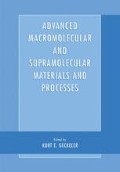Abstract
Polyelectrolyte complexes (PEC) are the products of cooperative coupling reactions between two unlikely charged polyions of high charge density, in particular with ionogenic groups in each monomer unit of the chain. Of late there has been a widespread interest in research of competitive reactions in PEC’s solutions mimicking some important regulator processes in vivo accompanied by a transfer of charged biopolymers. Data obtained on studying of equilibrium, kinetics and mechanism of the competitive interpolyelectrolyte reactions are summarized in review1. These results lead to crucially new consideration of PEC as macromolecular compounds, permanently exchanging by polyions in water-salt solutions. The ability of PEC to combine high stability with the capacity to take part in the interpolyelectrolyte reactions ensures self- assembly of complex particles in the solutions. Perfect selectivity and high rate of the cooperative interpolyelectrolyte reactions endow PEC with sensitivity to external factors (pH, ionic strength, temperature, etc.) making them self-adjustment systems. Both formation of PEC and their transformation are accomplished by the method of trials and errors via polyions transfer until the equilibrium is achieved.
Access this chapter
Tax calculation will be finalised at checkout
Purchases are for personal use only
Preview
Unable to display preview. Download preview PDF.
References
V. A. Kabanov, in: Macromolecular Complexes in Chemistry and Biology, edited by P. L. Dubin (Springer-Verlag, Berlin-Heidelberg 1994), chapter 10, pp. 151–174.
V. A. Izumrudov, I. Yu. Galaev, and B. Mattiasson, Polycomplexes-Potential for bioseparation, Bioseparation 7, 207–220 (1999).
A. V. Kabanov and V. A. Kabanov, Interpolyelectrolyte complexes of nucleic acids as a means for targeted delivery of genetic material to the cell, Polymer Science 36(2), 157–168 (1994).
V. A. Izumrudov, S. I. Kargov, M. V. Zhiryakova, A. B. Zezin, and V. A. Kabanov, Competitive reactions in solutions of DNA and water-soluble interpolyelectrolyte complexes, Biopolymers 35(5), 523–531 (1995).
V. A. Izumrudov, M V. Zhiryakova, S. I. Kargov, A. B. Zezin, and V. A. Kabanov, Competitive reactions in solutions of DNA-containing polyelectrolyte complexes, Macromol. Symp. 106, 179–192 (1996).
V. A. Izumrudov, T. K. Bronich, O. S. Saburova, A. B. Zezin, and V. A. Kabanov, The influence of chain length of a competitive polyanion and nature of monovalent counterions on the direction of the substitution reaction of polyelectrolyte complexes, Macromol. Chem., Rapid Commun. 9(1), 7–12 (1988).
V. A. Izumrudov and M. V. Zhiryakova, Stability of DNA-containing interpolyelectrolyte complexes in water-salt solutions, Macromol. Chem. Phys. 200(11), 2533–2540 (1999).
V. A. Izumrudov, M. V. Zhiryakova, and S. E. Kudaibergenov, Controllable stability of DNA containing polyelectrolyte complexes in water-salt solutions, Biopolymers (Nucleic Acid Sciences) 52(2), 94–108 (1999).
J.-B. Le-Pecq and C. Paoletti, A fluorescent complex between ethidium bromide and nucleic acids. Physical-chemical characterization, J. Mol. Biol. 27(1), 87–106 (1967).
J.-B. Le-Pecq, Use of ethidium bromide for separation and determination of nucleic acids of various conformational forms and measurement of their associated enzymes, Methods of Biochemical Analysis 20, 41–86 (1971).
J. Dufoureq, W. Neri, and N. Henry-Toulme, Molecular assembling of DNA with amphipathic peptides, FEBS Lett. 421, 7–11 (1998).
K. D. Stewart, The effect of structural changes in a polyamine backbone on its DNA-binding properties, Biochem. Biophys. Res. Com. 152(3), 1441–1446 (1988).
H. S. Basu, H. C. A. Schweitert, B. G. Feuerstein, and L. J. Marton, Effects of variation in the structure of spermine on the association with DNA and the induction of DNA conformational changes, Biochem. J. 269, 329–334 (1990).
V. A. Izumrudov, A. B. Zezin, S. I. Kargov, M. V. Zhiryakova, and V. A. Kabanov, Competitive displacement of ethidium cations intercalated in DNA by polycations, Dokl. Phys. Chem. 342(4–6), 150–153 (1995).
D. Oupický, Č. Koňák, and K. Ulbrich, DNA complexes with block and graft copolymers of N-(2-hydroxypropyl)methacrylamide and 2-(trimethylammonio)ethyl methacrylate: effect of copolymer composition, J. Biomaterials Sci. 10(5), 573–590 (1999).
T. B. Wyman, F. Nicol, O. Zelphati, P. V. Scaria, C. Plank, and F. C. Szoka, Design, synthesis, and characterization of a cationic peptide that binds to nucleic acids and permeabilizes bilayers, Biochemistry 36, 3008–3017 (1997).
V. A. Kabanov, A. B. Zezin, V. B. Rogacheva, Zh. G. Gulyaeva, M. F. Zansokhova, J. G. H. Joosten, and J. Brackman, Interaction of astramol poly(propyleneimine) dendrimers with linear polyanions, Macromolecules 32(6), 1904–1909 (1999).
D. V. Pergushov, V. A Izumrudov, and A. B. Zezin, Competitive binding of iodide anions by polycation including in water-soluble interpolyelectrolyte complex, Polymer Science 39B, 237–238 (1997).
W. H. Strätling and I. Seidel, Relaxation of chromatin structure by ethidium bromide binding: determined by viscometry and histone dissociation studies, Biochemisry 15(22), 4803–4809 (1976).
Author information
Authors and Affiliations
Editor information
Editors and Affiliations
Rights and permissions
Copyright information
© 2003 Kluwer Academic/Plenum Publishers
About this chapter
Cite this chapter
Izumrudov, V.A., Zhiryakova, M.V., Akritskaya, N.I. (2003). Fluorescence Quenching Technique for Study of Dna-Containing Polyelectrolyte Complexes. In: Geckeler, K.E. (eds) Advanced Macromolecular and Supramolecular Materials and Processes. Springer, Boston, MA. https://doi.org/10.1007/978-1-4419-8495-1_21
Download citation
DOI: https://doi.org/10.1007/978-1-4419-8495-1_21
Publisher Name: Springer, Boston, MA
Print ISBN: 978-1-4613-4630-2
Online ISBN: 978-1-4419-8495-1
eBook Packages: Springer Book Archive

